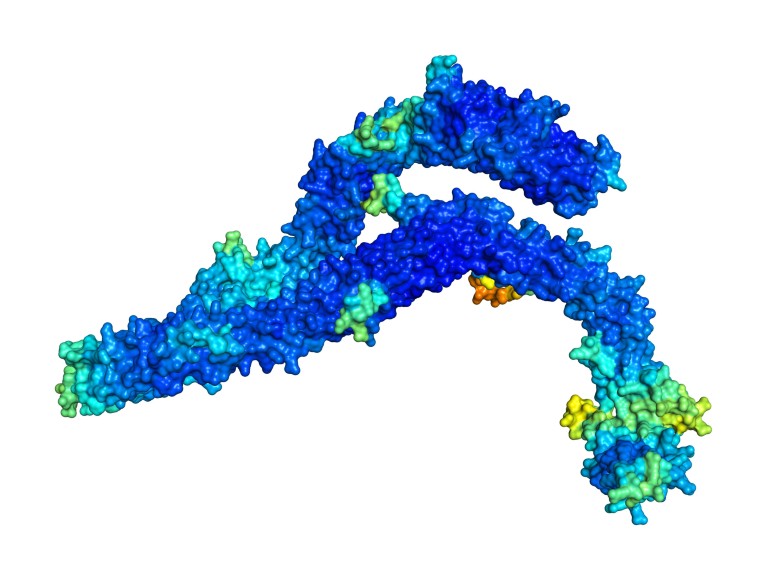
A 3D rendering of Dynein. Credit: Jean-Marc Billod/ Shutterstock
Dynein, a molecular motor capable of transporting cargo within a cell, generates wave-like oscillations in microtubules in a purified synthetic system, researchers at Indian Institute of Science Education and Research (IISER) in Pune have found1. This knowledge could help engineer better nanodevices.
Microtubules — hollow rods found in the cytoplasm of cells — act as highways allowing dynein to carry cargo such as proteins and membrane organelles.
Previous research predicted how dynein creates oscillations in microtubules but those models were not backed by experimental tests. The IISER scientists pinned one end of the microtubule on a coverslip and allowed yeast cytoplasmic dynein to bind to its free end in the presence of adenosine triphosphate. As the dynein bound and moved along the tip, it generated force, causing the tip to bend and buckle. This made the tip oscillate at a millihertz frequency much slower than ciliary motion.
The researchers, led by Chaitanya Athale, modelled the microtubules as semi-flexible polymers by clamping their plus ends and keeping their minus ends free to bind dynein. Binding and unbinding of dynein caused the free ends of microtubules to bend and buckle. This closely resembled experimental observations to enhance the understanding of the collective mechanical effects of such oscillations.
